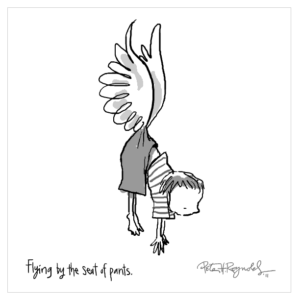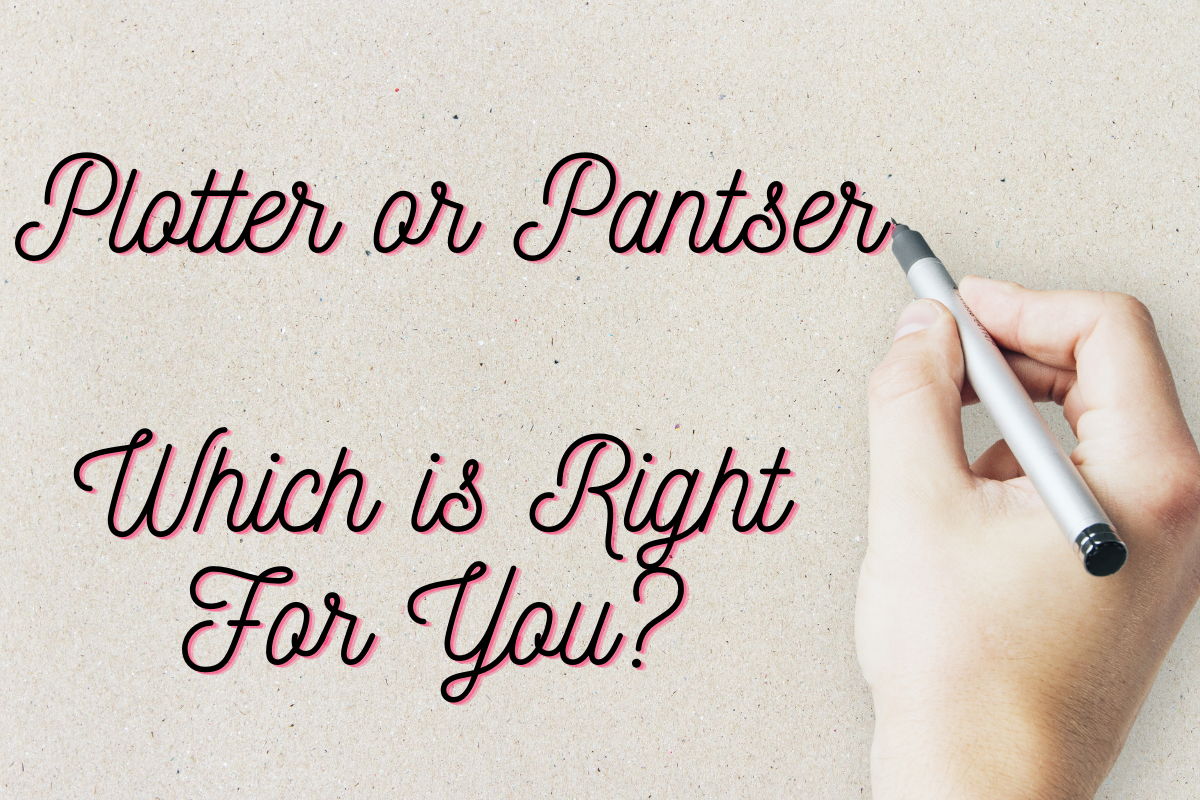I swear it’s been the age-old battle since I first started writing–are you a pantser or a plotter? If you hang around a lot of writers, you probably get asked this question a lot. And you may even have an answer.
For some people, it depends on the project. For some, it’s a hard and fast rule with no options for deviation. Some people fall somewhere in the middle–we call those plantsers, just to really dig that metaphor into the ground.
So why all these really weird names? Well, the whole idea starts with the pantsers. They “fly by the seat of their pants” when they write.
Pantsers enjoy letting their creativity flow. They wait for the must and when they work, they work without a script. They get to be spontaneous and their writing pieces aren’t planned out in advance. This sounds like fun…and it is! Usually until revision–where things get dicey. Because there wasn’t a plan for the story before writing, the plot may have a very loose or non-existent structure, characters may not be consistent, and in some cases, the plot might not appear until halfway through the story. That’s okay, that’s what edits are for! If you’re the type who enjoys writing like this, that’s fine. The editing process may be longer for you, but you’ll find your way through. It’s all about your level of comfort.

Plotters plan everything. They have their stories planned according to a specific structure chart. They know everything about their characters before they even go in–from their hair color to their favorite ice cream flavor–even if they know such details will never make it into the story. This can often make the story flow much more smoothly in the drafting process. Writer’s block, while not banished, can be significantly less trouble when you know what comes next, and with details and sometimes actual snippets of dialogue and description planned out in advance, an author can really have more paved ground to move across. However, plotting isn’t perfect either. For some, it’s too rigid a format, and it takes the joy out of writing. Sometimes, authors even struggle with the desire to write because the story is already moved from their minds to the page–in the form of their outlining.
The truth is, you’ll have to revise even when you plot. There will always be changes that come out in the course of a story. There will always be elements you imagined would work that don’t actually pay off when you’re working them into your story.
So if pantsing is too much revision, and plotting is too rigid, is there another way? What’s the best way to handle this?
The misconception people make when they think you have to choose Plotter or Pantser, is the idea that outlining requires rigidity, while pantsing does not. However, an outline doesn’t require rigidity. In fact, I would argue that an outline can be fluid. Should be fluid. MUST be fluid.
I reject both. I’m a plantser.

Personally, I outline. Meticulously. Annoyingly. The outline for one of my novels contains snippets of dialogue, snippets of description, setting and character traits and usually weighs in at roughly half the size of the book. I spend a couple of months before the book brainstorming and that is what is produced.
Usually, the outline has loads more detail and even more story than the actual novel does. Because once I start writing something and a part of it clearly doesn’t work, clearly weighs down the story, I toss it. Then, before I start the next chapter, I review my outline for that chapter. I change it accordingly, cutting the story bits that no longer make sense and improving the things I have tightened in the previous chapter, because sometimes you just don’t know if a story element will work until it is out and on paper.
I’m not saying that this creates a perfect novel. There are still many revisions to be done after completion. But it will keep you on track. It will keep you focused on the plot progression. And it will leave you the availability to still be flexible, to remain with your characters when they decide they just want to do something else today. As long as you continuously adjust your outline, you should be able to maintain a consistent storyline while still allowing the muse to guide you when it swings by for a surprise visit.
The important thing is that you have control of your muse and not the other way around. If you have a good idea of the main points of the beginning, middle, and end of your book, you will become able to view the muse’s twists and turns in a logical way. Does this new idea your muse has gifted to you change the ending? For the worse? Chuck it. It’s not worth your time. Does it change it for the better? Yes? Well, better is always…better. So keep it. Readjust your outline so the remainder of the story has a logical flow towards your new end.

Without an outline of any kind, your muse can lead you anywhere. You know that crime fighting duo you’re writing about? You don’t know where they are going to end up, so you journey along with them. And suddenly you’ve written two hundred pages of slapstick comedy on a Caribbean cruise. Why? JUST BECAUSE. That might be comedy gold. But it is certainly not what your story is about. So how do you handle this?
You create a file in your computer. Mine is called Dump Doc. You can call yours Chuck Bucket or Vomit Pail (why do these all sound barf-themed?) or something less gross, but you can put all of the ideas that don’t fit your current story in there. If something is nagging to be told, take an hour out of your writing day and write it in this file so you don’t lose it. And then carry on with the things that will really fit in the story. This is also a good place to store scenes you have cut from other stories.

And the best part about doing this? You become more prolific. You will use these little snippets, ideas, scenes, word choices again. You will look over your Vomit Pail and you will find inspiration in connecting one chunk to another chunk (easily the funniest line I’ve ever written on this blog).
And on that unexpectedly gross note, I would like to ask, how do you outline? Or are you a pantser? And if so, how does that work? Post your thoughts in the comments!

